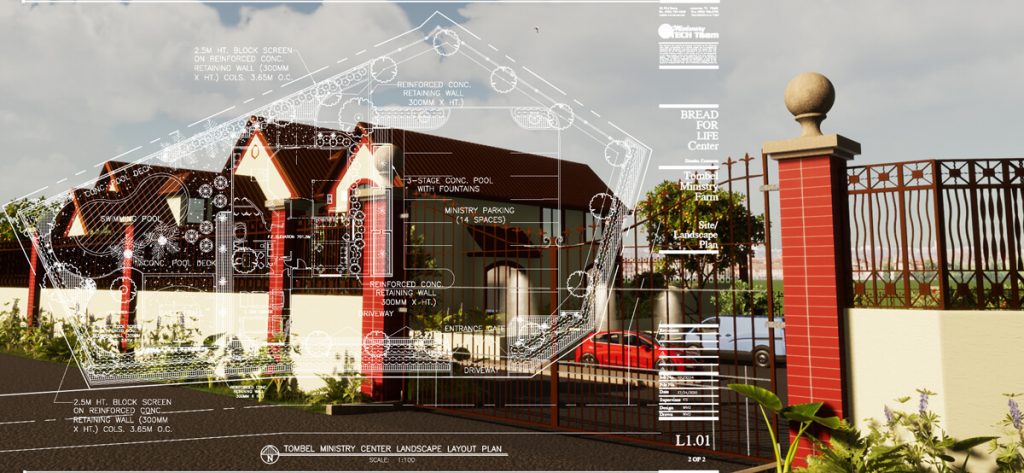
How to Present Building Campaign Plans
How do you present building campaign plans to your stakeholders?
There will come a time in ministry when building campaign plans will be required in order to meet specific needs. Perhaps the sanctuary is no longer big enough to hold the congregation. Has the children’s ministry has doubled in size? Have you started running low on the number of beds available for campers and recognize the need to enlarge the cabin space.
As a leader, you’ve recognized the need for a building campaign. You begin what is sometimes a long, tedious process that takes weeks, months, and even years to work through! You will assemble teams, lift up prayers, and cast dreams. Then, everyone will prayerfully wait for God to guide the ministry in the direction He sees best fit. After considering all options and waiting on God’s perfect timing, you finally arrive at a solution.
So……what’s next?
The building campaign plans will need to clearly communicate the impact of the proposal and purpose behind it to your stakeholders (i.e. board, congregants, etc.). However, as you begin preparing for the presentation, you find yourself wondering what exactly it looks like to clearly communicate the vision to a group of individuals who haven’t been involved in the process.
How to Present Building Campaign Plans
Based on our experience, we would encourage you to keep these five (5) things in mind when presenting building campaign plans to your stakeholders:
1. Knock on their hearts when you present building campaign plans.
Never assume your audience is already aware of the problem you’re attempting to solve. What may be obvious to you may not be obvious to them. They may not realize how the issue is hampering the ministry. Although it is safe to assume the stakeholders are invested in the ministry, we always encourage you to start with a brief overview of the vision the stakeholders have for the ministry and how the Lord has blessed the ministry. Use stories centered around the individuals you minister to. Highlight all the ways you’ve seen the Lord minister in their lives.
2. Kindle the fire.
There should always be a “but” to the presentation—a way to express the issue you are attempting to address and how a building campaign is a necessary and vital part of the project. Your goal is to kindle the fire by sharing facts about what God is doing in your ministry and then pointing out why a building campaign is needed.
Examples:
- “We minister to 150 kids each week, but our rooms are overflowing.”
- “Our organization serves 1,000 meals a day, but we turn away 100’s more every day.”
- “We can care for 5 women at a time, but we have a waiting list 20 names long.”
3. Keep it simple when you present building campaign plans.
Buildings are complicated enough, so it’s important to keep the project proposal as simple as possible when presenting. Attempting to explain how your team came to each conclusion will cloud the vision and hinder your stakeholders from being able to see and understand the purpose of the project. Instead, it’s important to focus on the present plan as a whole. Most do not need the details, and those who do will seek the information. You can address these matters during the Q&A session at the end of the meeting.
4. Kick it up a notch.
Although you know the plans through and through, this will likely be the first time those in attendance have seen them. To help stakeholders read and understand the floor plans, consider having color rendered plans, 3D digital models, or other graphic depictions of the project to help the audience visualize what the building will look like.
5. Kneel together.
It’s essential to keep your project centered around prayer. This is the Lord’s project, and He will fulfill it in His time and in His way. As you work through the planning process, it’s important to pray through the project with your team and invite your board or congregation to join you as you seek the Lord’s guidance in the big and small details.
Conclusion
As you know, there is no guarantee your audience will catch the vision. However, keeping these five points in mind will help you communicate your vision clearly and simply!
If you have additional questions, need a 3D model built for your project, or could use assistance as you prepare for your next building project, contact our Facility Solutions team and we would be glad to walk with you through this process!
Please visit this link to learn more about our eligibility requirements: https://bit.ly/3naODp8

Looking for the Unexpected
In this post, Eric shares his experience and thoughts behind looking for the unexpected. A few weeks ago, my commissioning church had a Missions Emphasis

Can 3D Printing Be Used as a Ministry Tool?
Did you know 3D printing can be used as a ministry tool? Our ministry was built on providing technical needs to churches, Christian camps, andmany

What is a Responsive Website and Why Do You Need One?
When it comes to designing a website for your church, organization, or ministry, it’s important to design a responsive website. What’s a responsive website, though?

3 FAQs About Mobile Apps for Christian Ministries
Below are a few of the FAQ’s we’ve received about mobile apps for Christian ministries! Our Software Solutions team has developed smart phone apps with

5 Tips for Forming a Building Committee
Is it time to hire an architect and begin your next building project? If so, you will likely be asked to consider whether or not

Why Rural Ministries Still Need a Building Permit
In some rural areas in the United States, a building permit is not required when it comes to building construction. As a result, it may



